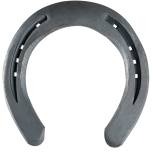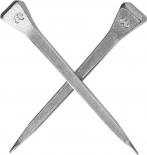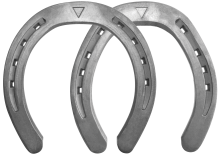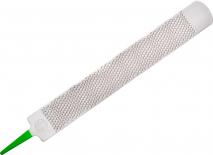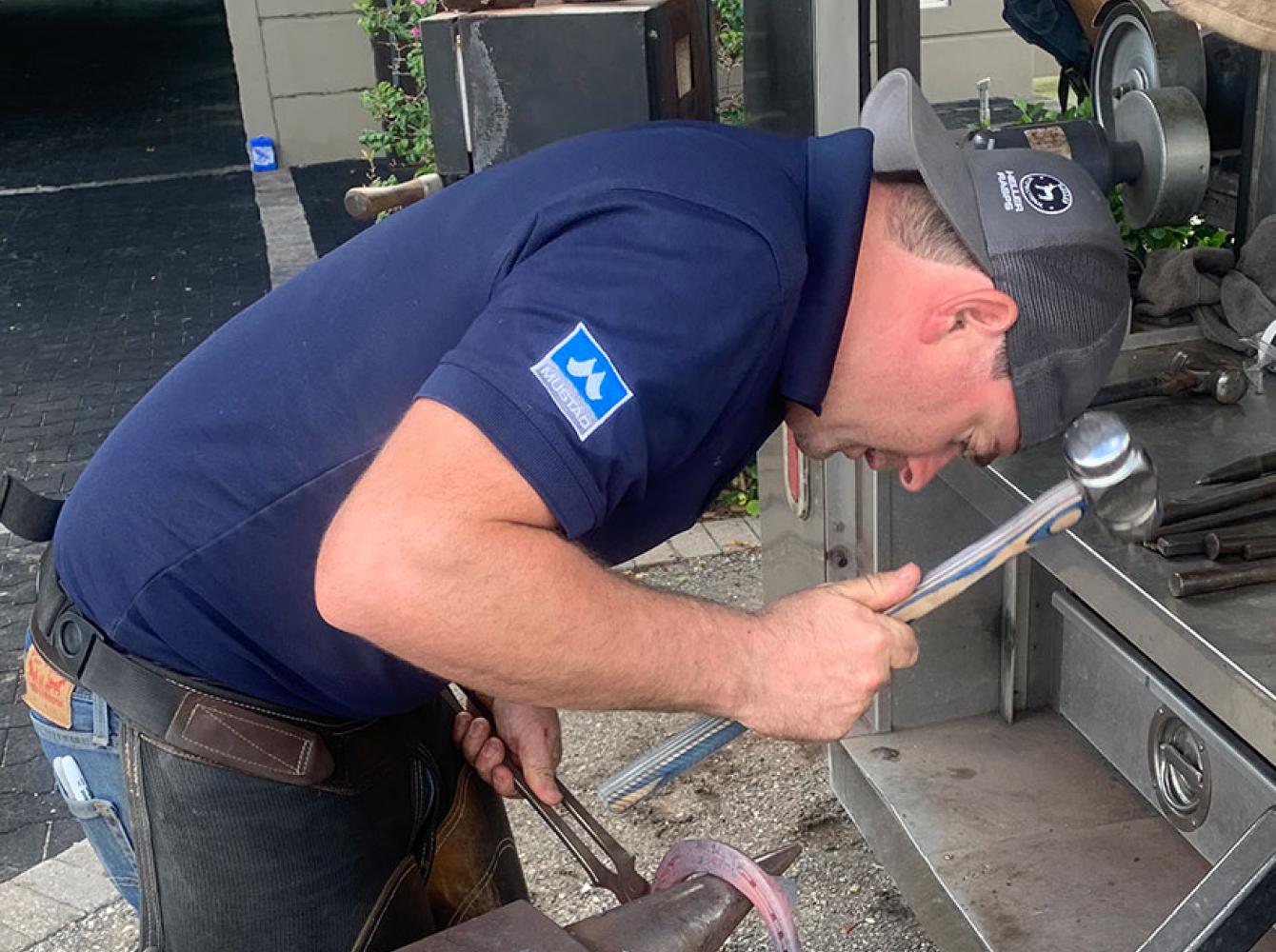
Paul O’Reilly, CF IMF
Paul’s journey took him all the way from Ireland to Kentucky to Florida. But what he’s learned is even more impressive than where he’s been.
The Life of O’Reilly
He’s built an exceptional practice. As a student, he was a serious competitor. Other farriers consult him on hard cases, and his clients are a who’s who of the American equestrian scene. But Paul O’Reilly almost didn’t enroll in farrier school.
After working with his local farrier, Paul attended an open house at the Irish School of Farriery. There, he met Martin Leahy, the farrier at the Irish National Stud & Gardens, who Paul had previously done a work shadow with. It was this second encounter that would give Paul his start in the farrier business, though he didn’t know it at the time.
While Paul was interested in attending the respected program, he still hadn’t arranged the required apprenticeship. As that summer was coming to a close, the head of the Irish School of Farriery, Mia Malley, called to let Paul know he would be starting that fall. Paul's immediate reaction was, “but I don’t have an apprenticeship,” only to hear a few words that would start his journey.
“Martin Leahy has agreed to be your master farrier.”
And with that, Paul began a journey that would take him to some of the most prestigious barns in the world.
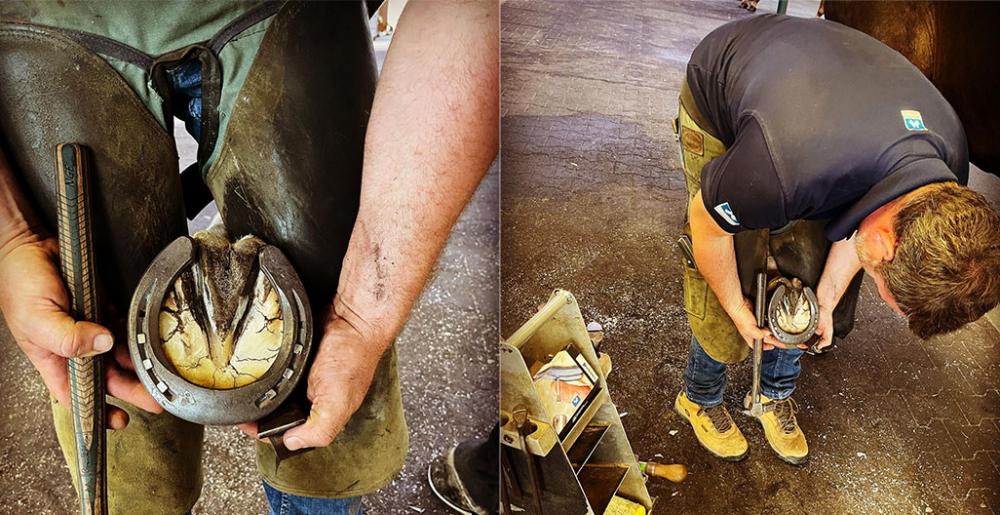
Four years of forging skills
Farrier training in Ireland is a rigorous four-year program. Paul embraced the opportunity. As an apprentice with Leahy and hometown farrier Michael Burn, he stayed well after work and practiced the craft. “The master farrier will provide all the iron, coke, and tools,” so putting in the work just made sense. And coming from a farming and construction family, he understood what it meant to work hard. In those days, he’d put in 10 and 11-hour days perfecting his skills.
That led him to Euro and World Skills Championships and competitive shoeing contests as a part of the Irish team, which included farrier Paul Robinson. Between school and competitions, Paul finished those four years with a strong foundation in forging, toolmaking, and shoeing. It was time to see the world.
From Kildare to Kentucky
So, he started working with the Irish farrier Conor McCarthy in Lexington, Kentucky. On a challenging club foot, they called veterinarian Bryan Fraley DVM. “Bryan shows up and pulls out an x-ray machine. We shoe it together and the horse was soon doing way better.”
“I started hanging out with Bryan on the weekends just to learn. He offered me a job at the end of my year with Connor.” Paul learned how shoeing can help address conditions such as coffin bone problems, bilateral tenotomies, founder, and quarter cracks. He learned how to take x-rays, administer nerve block, and prepare venograms.
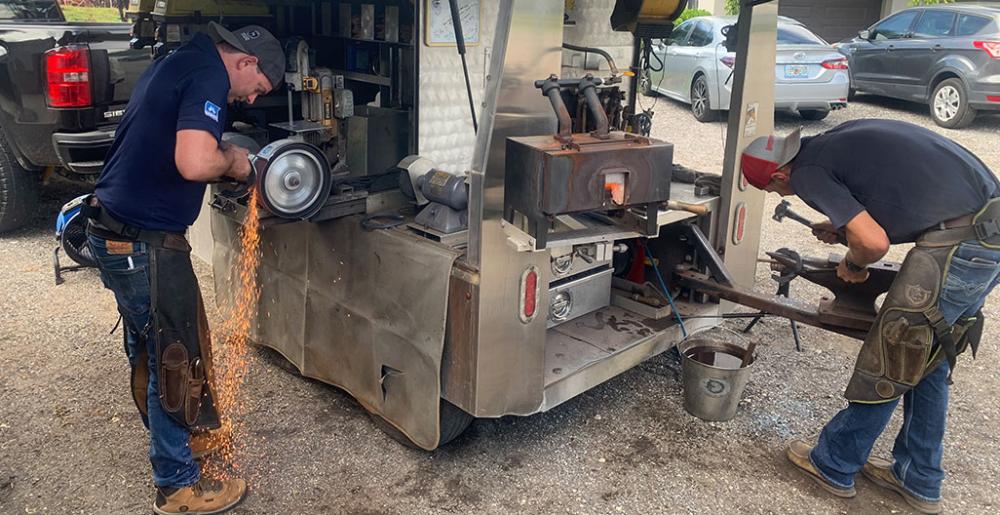
In their time together, the two farriers received a call from a sport horse vet about a lameness case that vaulted Paul into a larger sport horse community. “It wasn’t anything crazy and I shod the horse. And the horse ended up winning like three Grand Prix in a row. And that's when I got into shoeing sport horses.”
From Lexington to Wellington
Soon, he was spending half the year in Florida with sport horse clients.
The skills Fraley helped instill were invaluable. “Bryan really opened my eyes to what we can do as farriers for lameness issues. When you can see an x-ray feed and see what you’re doing with mechanics, that’s a huge help. I can talk to these top vets and use their terminology. And we can come up with a good, solid plan, instead of ‘let’s try it and see.’”
That knowledge and what he calls years of “bent over shoeing” has helped him build a practice in Wellington, the home of the Winter Equestrian Festival.
It’s a community with high standards. That makes the work both satisfying and stressful. “You’re constantly double checking. These horses will be jumping in a five-star class in two days so you can’t afford to trim ‘em too short, shave a nail too close, or miss something.”
Top Competitors Demand Top Products
Nothing but the best products will do in this market. Fortunately, Joy of Palm Beach Farrier Supply keeps her shop well-stocked with Mustad products. Paul and Mustad Rep David York check in whenever David is in town, discuss products, and often visit barns together. Paul also knows he can turn to David for added support from products to questions. With a camaraderie between the two, Paul recalls when “One of the guys couldn’t get ESL nails I sent him on to David.”
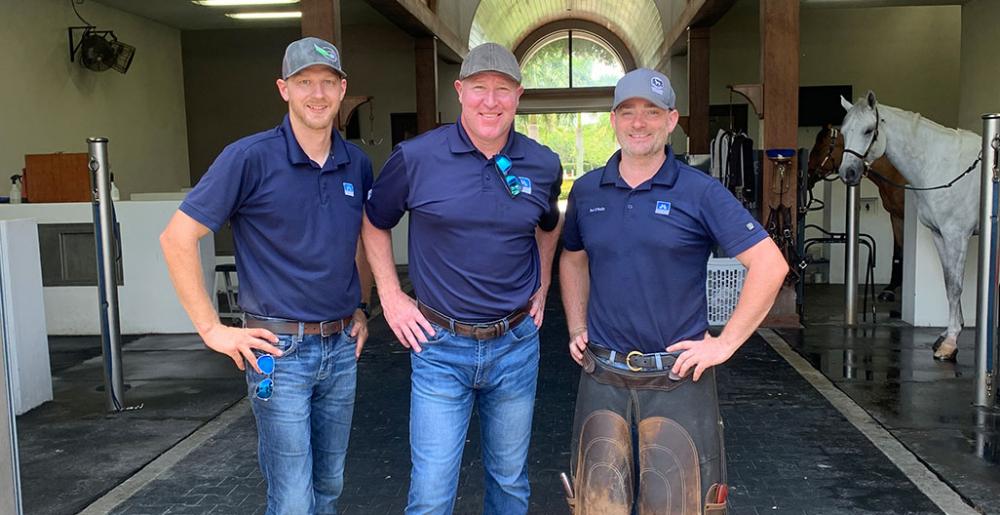
Paul relies on toe clip and non clipped Equi-Libriums for front feet. “They nail up good. They wear good. I don’t have to forge in roll toes or grind them because they’re already there. I use only Heller eXceL Legend rasps.”
Because most of the horses are warmbloods, he uses heavier shoes and nails. “Nearly everything I use are Mustad ESL Pitch 3s, 4s, and 5s because they fit so good in those Equi-Libriums.” He uses Delta Challenger TS8s on the few thin soled horses he sees.
He also uses Mustad products in his more therapeutic work—combining a TS8, pads, and Comfort Mix Hoof Cushion to address a medial collapse, and, in another case, an Equi-Librium put on backwards for an 18-year-old with a strained ligament, which Paul refers to as the so-called bank robber shoe.
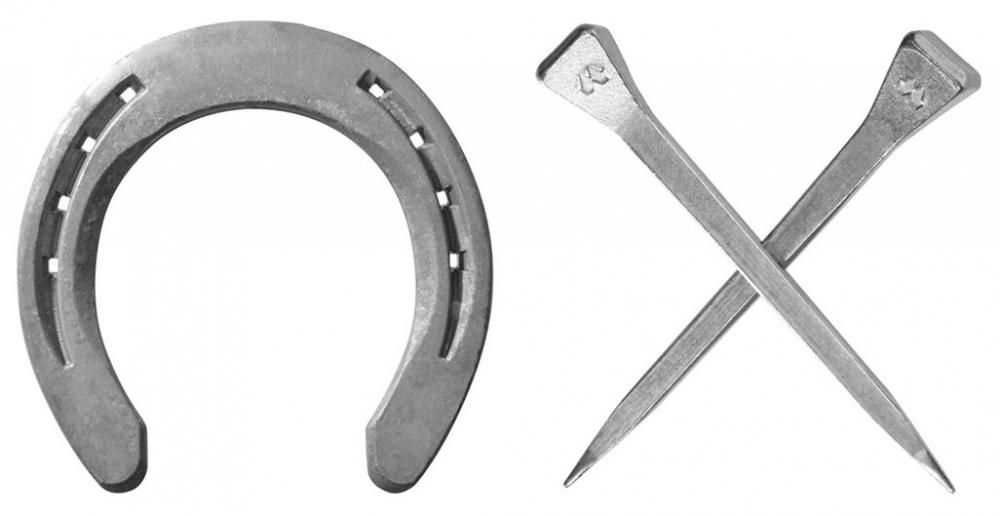
4,500 Miles Later
The journey from Wicklow, Ireland to Lexington, Kentucky was 3,733 miles. The journey to Wellington was another 984. Having traveled over 4,500 miles, Paul has reached his destination, and he’s enjoying it.
In addition to a thriving practice, Paul built a pretty sweet life. He met his wife, Jessica Forend-O’Reilly, at a barn while shoeing dressage and sport horses. The two purchased a farm in Loxahatchee. With help from eight farrier friends and his father-in-law, they built a barn with eleven stalls and six paddocks which became part of Jessica’s impressive dressage training business, Noépe Dressage.
For fun, he rides dirt bikes competitively. Although Paul is one of the nicest guys you’d want to meet, he also thrives on competition. Even as a teenager, he was a world-class endurance horse rider.
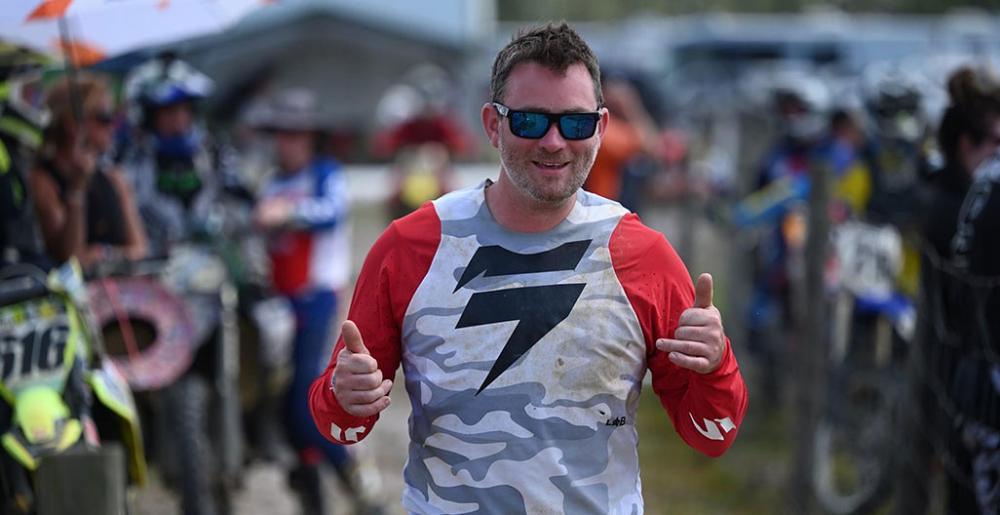
These days, he’s working on more dressage horses, who travel less, and telling new clients he isn’t interested in traveling. He does welcome visitors though. He thinks it would be great to create a workspace where farriers could collaborate. He may have settled down, but he’s still pursuing—and sharing—knowledge.
